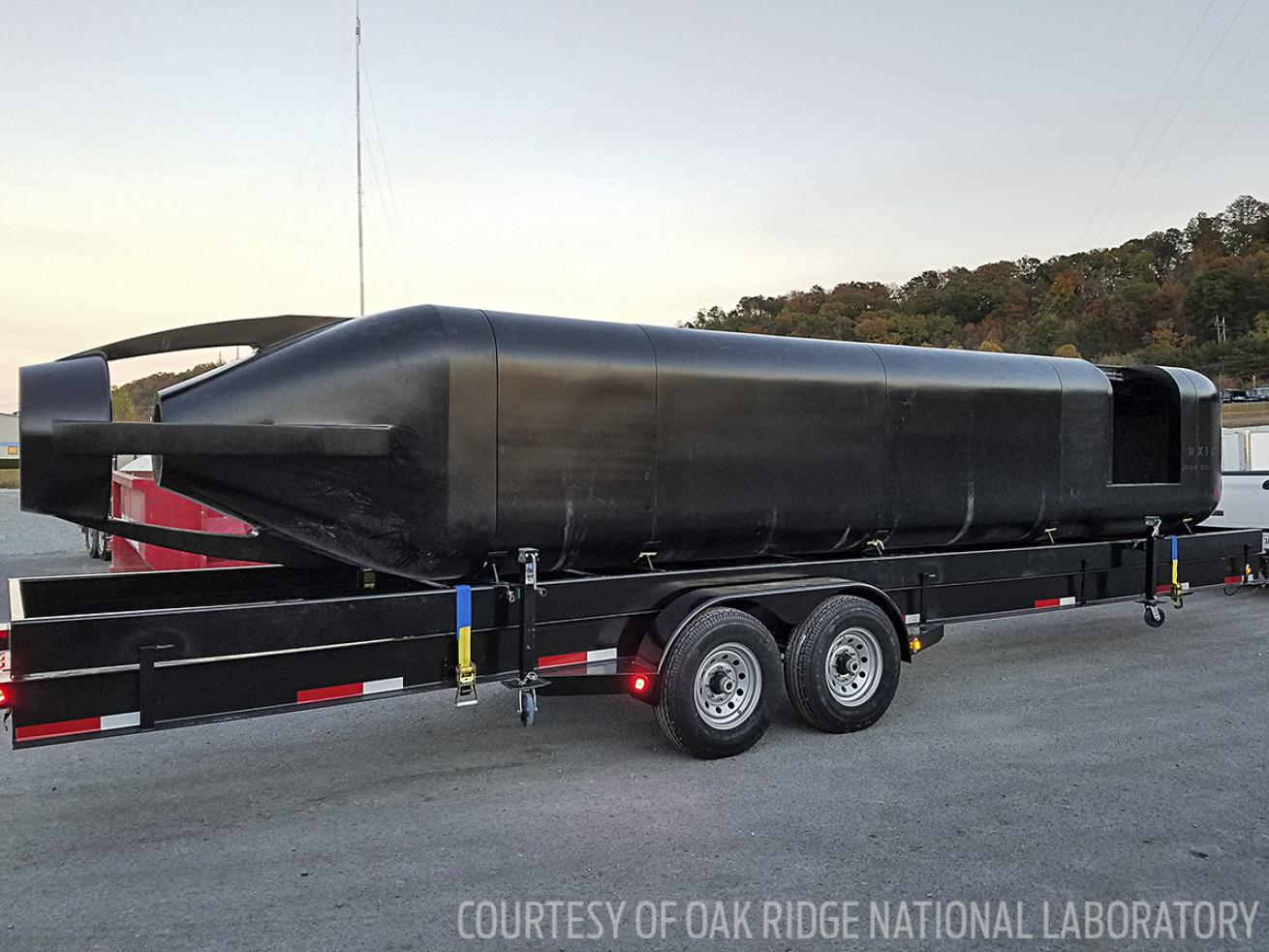U.S. Navy 3D-Prints Submarine
While 3D printing isn’t new, testing the limits of 3D-printed watercraft is. In July, the U.S. Navy teamed with the Naval Surface Warfare Center Carderock Division and the Oak Ridge National Laboratory (ORNL) to create the first prototype of a 3D-printed submarine. The 30-foot craft — which unlike a typical submarine will be water filled — can carry four to six Navy divers who will be on open-circuit scuba or rebreathers. The sub also can be operated unmanned.
Check out this video of the process in motion, courtesy of Oak Ridge National Laboratory, U.S. Dept of Energy:
When a team of 25 naval architects from Carderock arrived at ORNL, they didn’t have a design — just the idea. In week one, a design was hatched. In weeks two and three, the design was printed and then assembled.
The sub was delivered for testing on week four. Testing was limited, however, because this version is a proof of concept, not a model designed for in-water use. That will come next.
The advantages of 3D-printed submarines and other watercraft are many, starting with the facts that there are far fewer parts and the cost is a fraction of traditional manufacturing. Traditionally, producing a submarine of this size is estimated at $600,000 to $800,000. The 3D-printed sub cost just $34,000.

OAK RIDGE NATIONAL LABORATORYThe finished product: a 3D-printed submarine
“The disadvantage now is that it’s not as structurally sound as the original,” says Lonnie Love, corporate fellow at the ORNL, pointing out that plastic is heavier and weaker than aluminum.
The trick will be finding how much carbon fiber to add to the printing material to decrease weight while adding strength.
For divers and the boating community at large, what’s perhaps more exciting is that 3D printing allows anyone to affordably design and produce a single, customized vessel, such as a catamaran, as well as jigs, fixtures and boat parts.
“What’s really neat about this is mass- customization,” he says. “You can design a one-of-a-kind thing and print it. It doesn’t cost any more than making 10 or 100 of something.”
The laboratory also is looking at how to use the technology to lower manufacturing costs for the whole marine industry.
WHAT’S NEXT
Advancing 3D-printing technology means that divers could soon design and 3D-print:
» Custom DPVs
» Personal underwater habitats
» Personal submarines
» Custom dive boats with specialized platforms
» Tank racks for boats and vehicles
WHAT YOU CAN 3D-PRINT NOW
» Camera lenses that rely on acrylic, not glass
» Artificial reefs
» Underwater cameras
» Swimsuits printed from Nylon 12, a strong, flexible, waterproof material that’s .7 mm thin
» Underwater ROVs
» Dive reels
» Boat propellers
» Wetsuit hangers
» Carabiners
» Buckles
» Gear replacement parts
» Multitools
» Dive-watch bands










